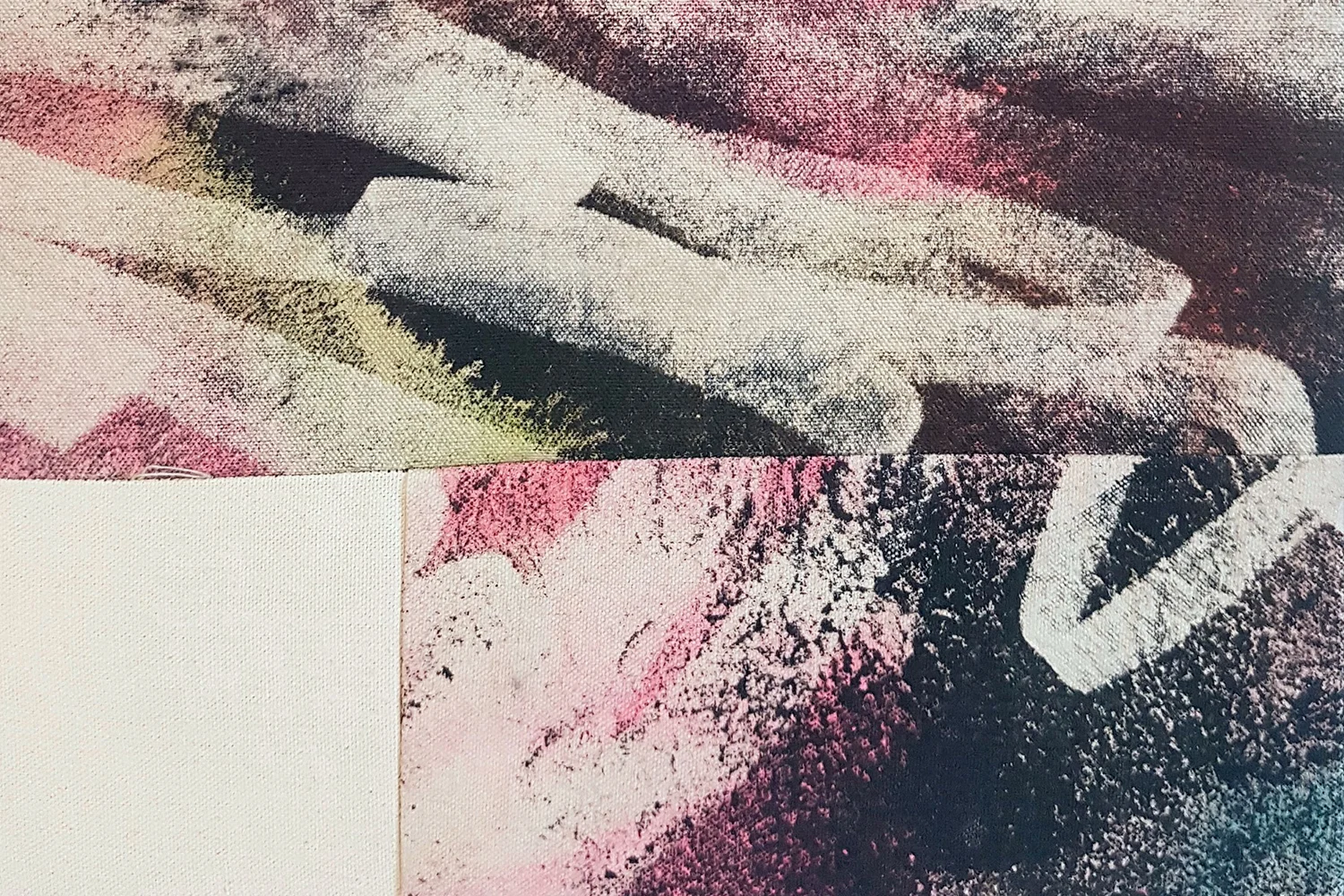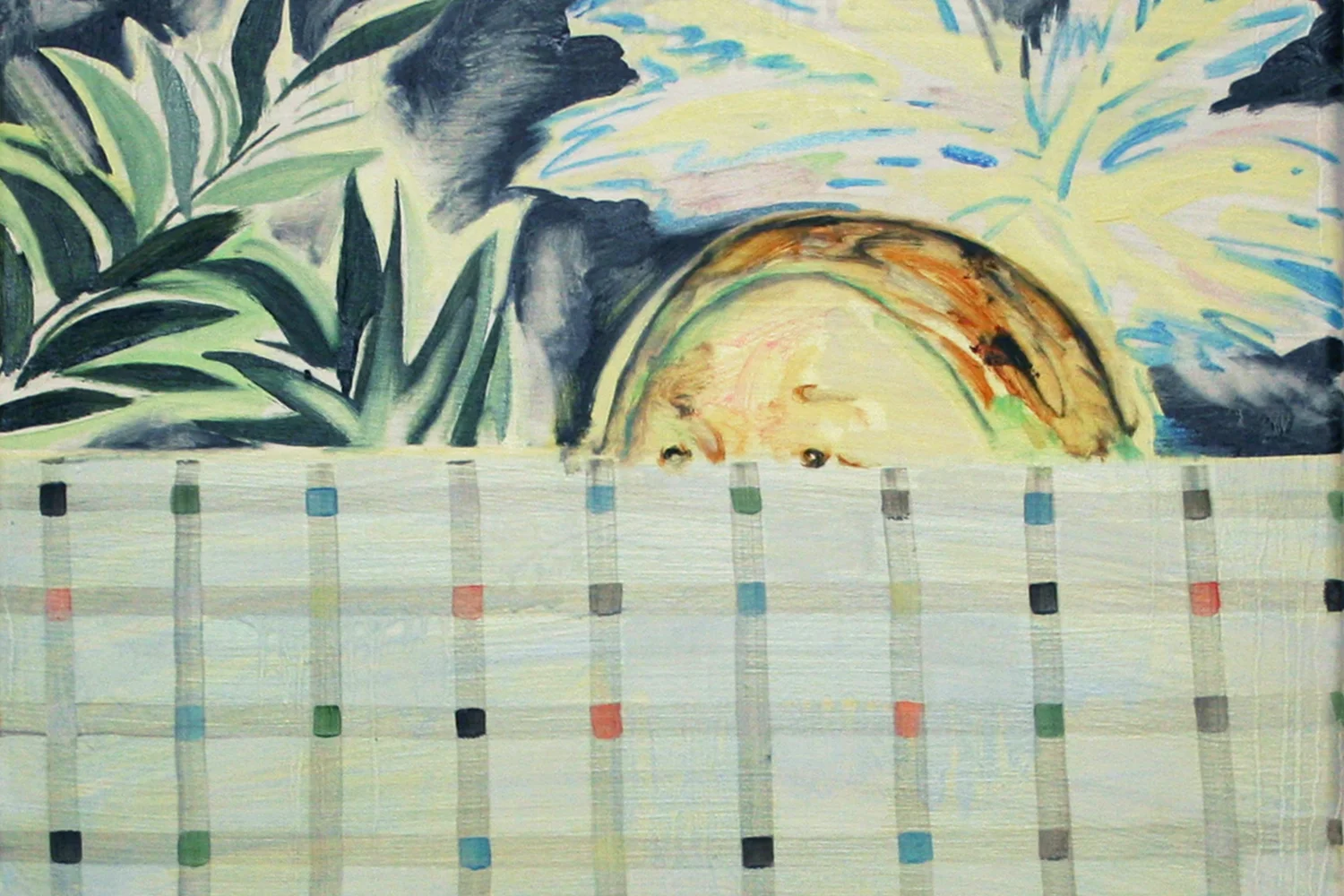











Nancy Allen works with a series of dissonant combinations of materials and attachment techniques that may conjure up associations with kitsch design, folds in flesh, Barbara Hepworth sculpture, upholstery, artificial plants, and even the noises associated with traditional workmanship. Her malleable and lightweight materials tend to have connotations more usually associated with clothing, packaging and temporary structures than traditional sculpture.

ADDITIONAL AWARD WINNER - 2017
Olivia Bax’s steel plaster and clay structures typically f ind their roots in drawing and sketching and carry through her loose gestures, the marks and decisions of the making, into the surface of the finished work. Repetition of a simple motif often generates the form, which is then constructed in separate parts, individual flat elements that become three-dimensional when the work is assembled. These works suggest an almost domestic functionality, utilising accents of bright, eye-catching colour to highlight particular elements of their form.

AUDIENCE CHOICE AWARD WINNER - 2017
Cadwallader’s paintings have been described as idealised or romantic but can also come across as artificial and hallucinatory in an unsettling way. He arrives at the imagery through a combination of memory and process, his ideas going through various stages of drawing, photography and collage before taking on a life of their own, to evolve in unexpected directions. His protagonists are usually depicted alone, doing quite introverted things, their expressions ambiguous or inscrutable, often pictured in contemplation of a piece of fruit. These might remind you of all sorts of things; healthiness, bitterness, holidays, innuendos, soft drinks, the smell of disinfectant; or they may simply be viewed as one patch of colour working in relation to other patches of colour in a purely visual way.

Fiona Curran works with the poetics, the politics and the materialities of landscape space via the making of objects, both for exhibition and for site-related commissions. Images and objects,¬ painted, found, handmade and fabricated, sit alongside one another in differing modes of display. They explore notions of the original and the copy, the natural and the artificial, the real and the imagined, and the role of technology in mediating between these positions. There is a strong tactile element at play that works to both mimic and counter the saturated spaces of screen technologies with their heightened colour and sleek, luminous surfaces.

Beth Fox is a multi-media artist whose work aims to investigate relationships present in dominant ideologies, using humour to highlight and question the nature of irrationality. Appropriated footage and sound are used to explore definitions of the absurd, remaking and reinterpreting pre-existing artefacts and behaviours and incorporating references from art history, cinema or literature, which act as catalysts to explore broader philosophical concerns. Her f ilm ‘Easy Easy Easy Easy Easy’ is both a parody and a celebration of trends in contemporary video art and also acts as a frame for “Slapstick” - her remake of a scene from Woody Allen’s 1973 sci-f i comedy f ilm Sleeper.

Ralph Hunter-Menzies explores notions of structural decay and renewal in the urban landscape and the idea of creation through destruction or deconstruction. Recent works are stitched together and executed in acrylic and spray-paint, making reference to the marks made by the removal of graffiti on city streets. By exploring this ready-made aesthetic, itself a utilitarian by-product, a simultaneous removal and mark-making process has become the main focus in his practice. Through this act there’s a blurring of what is deliberate and accidental, with areas removed to reveal previously unseen and forgotten layers. These sit together with new marks made through the removal or destruction of what was originally there.

Korean born artist Sooim Jeong’s practice aims to gather scattered past memories and recompose them into images realised in oil paint on canvas. She re-locates various unrelated past memories and obsolete photographs, all the big and small happenings of her life, recognised and viewed with equal perspective, without distinction. The brutal and the mundane sit side by side to create current ‘non-special’ places in an entirely new scenario. These diverse extremes are blended together to create an ordinariness that provides her with a feeling of relief from angst, as well as simultaneous trepidation at the nihilistic meaninglessness of anything that this might suggest.

Alastair Levy works at the intersection of the industrial and the everyday through an interdisciplinary practice, which employs video, photography, painting, sculpture and sound. This incorporates various activities from working with found photographic transparencies purchased on eBay to constructing paintings, which combine industrial fabrics with traditional fine art materials. He is interested in the formal qualities and aesthetic charge of objects, which are mass-produced, hidden from view or on the brink of obsolescence.

Suzanne O’Haire’s assemblages elevate and transform materials from the defunct, overlooked or unseen to that which is again purposeful and newly provocative, creating permanent structures out of impermanent matter. She draws in personal narratives and activates the hidden and metaphorical potential of her objects. Here, works are defined, anchored by, or held within, already existing structures: racks, crates, drawers and cages. The aesthetic of these domestic-scale structures may, by turns, suggest abstracted architectural compositions or obsessively constructed, ritualistic or magical portals to yet unknown other worlds.

OVERALL AWARD WINNER - 2017
Aimee Parrott’s practice seeks to develop new ways of working by experimenting with different techniques and materials, to produce unexpected juxtapositions. Attracted to techniques that offer the potential for approaching the surface from a different perspective, or f ind a new way of mark making, she often utilises skills and materials associated with traditional crafts such as batik waxing, mono printing or oak framing; techniques that may now be obsolete or outmoded and that are often built through direct touch and muscle memory. Recent works were made involving a technique the artist developed using latex to make pieces that sit somewhere between painting, textiles and sculpture and focus on the female form, or fragments thereof.

Maryam Tafakory (b. Shiraz, Iran) is an artist-f ilmmaker living and working in London. Her work draws on the notion of ‘personal as political’ in a fractured narrative that involves a subtle negotiation between factual and f iction, exploring allegorical forms of visual narrative, using abstracted, symbolic and textual motifs and their on-screen representation. Her work, which also includes performance, draws on womanhood and rites of passage, interweaving poetry, (self)-censorship and religion, combining
